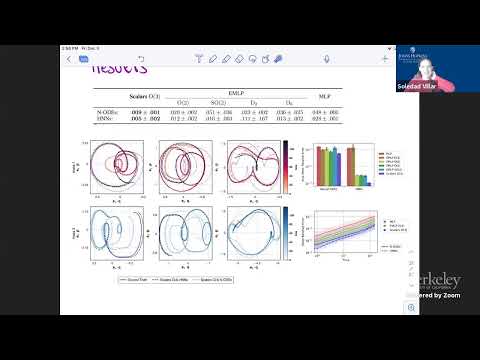Description:
Explore the intersection of machine learning and classical physics in this 59-minute lecture by Soledad Villar from Johns Hopkins University. Delve into the concept of equivariant machine learning and its applications in optimization under symmetry. Learn about graph neural networks, invariant spectral methods, and community detection. Examine the expressivity of graph neural networks and understand the fundamental theorem of equivariant machine learning. Investigate translation equivalence, general groups, and numerical examples. Gain insights into the structured approach of applying classical physics principles to machine learning algorithms.

Equivariant Machine Learning Structured Like Classical Physics
Add to list